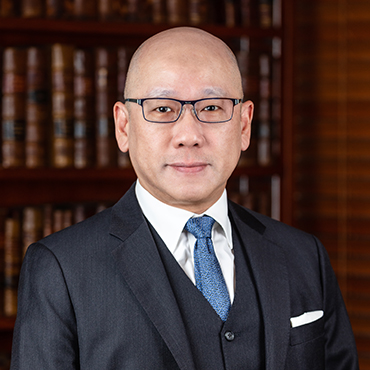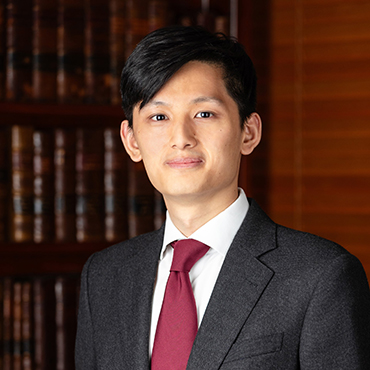HKSAR v Lui Sai Yu (呂世瑜) (2023) 26 HKCFAR 332, [2023] HKCFA 26 (Robert Pang SC, Jay Koon)
Robert Pang SC, Joe Chan, Yvonne Leung and Jay Koon represented the appellant in HKSAR v Lui Sai Yu (呂世瑜) (2023) 26 HKCFAR 332, [2023] HKCFA 26.
D pleaded guilty to incitement to secession, contrary to art.21 of the National Security Law (NSL). D admitted being one of the administrators of a Telegram channel which called for Hong Kong independence and posting messages “designed to incite violence and counsel disobedience to the law by … providing equipment and discussing tactics with protesters to use against the Police”. Article 21 (NSL 21) provides that where the circumstances of the offence were of a “serious nature, the person shall be sentenced to fixed-term imprisonment of not less than five years but not more than ten years”, and where circumstances were of a “minor nature, the person shall be sentenced to fixed-term imprisonment of not more than five years, short-term detention or restriction.” Having concluded the circumstances were of a serious nature, the Judge adopted a starting point of 5 years and 6 months’ imprisonment, to be discounted by one-third to reflect D’s guilty plea. However, having accepted the sentence must fall within the upper sentencing band, and thus could not be below 5 years’ imprisonment, the Judge reduced the sentence by 6 months rather than the full one-third. D’s appeal against sentence was dismissed by the Court of Appeal (see [2023] 1 HKLRD 751). At issue on D’s appeal was: (i) the proper construction of NSL 21, in particular, whether the stipulation of “not less than five years’ fixed term imprisonment” for offences of a serious nature was mandatory; and (ii) the proper construction of NSL 33(1), in particular, whether the three conditions specified were exhaustive and excluded other mitigating factors such as a guilty plea. NSL 33(1) provides that where an offender, criminal suspect or defendant either: (i) voluntarily discontinues the commission of the offence or voluntarily and effectively forestalls its consequences; (ii) voluntarily surrenders and gives a truthful account of the offence; or (iii) reports on the offence committed by other persons or provides material information which assists in solving other criminal cases, a lighter penalty, reduced penalty or, in the case of a minor offence, exempted penalty may be imposed.
Held, unanimously dismissing the appeal, that:
Approach to construction of the NSL
-
(1) The NSL functioned coherently with the HKSAR’s legal system, and sought “convergence, compatibility and complementarity” with local laws unless they were expressly or impliedly displaced in the event of inconsistency pursuant to NSL 62. This principle applied to the interpretation of sentencing provisions within the NSL where local sentencing laws and principles operated within that framework. This was evident in NSL 64 which prescribes how terms used in sentencing provisions “shall be construed … with reference to the relevant laws of the Region”, identifying local law equivalents for those terms. In tailoring the sentence to an individual case, the court might attribute greater, lesser or no weight to any particular sentencing principle or aggravating or mitigating factor. In doing so, rehabilitation should not be excluded as a sentencing principle. Given that NSL 21 expressly recognised that an offence may be of a “minor nature” and the sentencing options provided for in such case, the court might give weight to the objective of rehabilitation in a particular case by imposing a short, training-oriented sentence or a non-custodial sentence (HKSAR v Lai Chee Ying (2021) 24 HKCFAR 33 applied; HKSAR v Islam Azharul [2020] 1 HKLRD 644 considered). (See paras.20-32, 36-37.)
-
(2) In fulfilling their duty of enforcing the NSL and local laws with a view to preventing, suppressing and punishing acts that endangered national security, the courts would faithfully give effect to the NSL’s offence-creating provisions, and where convictions resulted, apply local sentencing laws and principles in tandem with the NSL’s sentencing provisions. In the process of convergence, selected elements of the local sentencing laws and principles should not be excluded from consideration. Thus, the approach of giving effect to the principle of “convergence, compatibility and complementarity” without excising any potentially relevant sentencing principles should be adopted (HKSAR v Lai Chee Ying (2021) 24 HKCFAR 33 applied; HKSAR v Ma Chun Man [2022] 5 HKLRD 246 approved). (See paras.33, 38-42.)
-
(3) There was no general principle that regard may be had to the relevant Mainland law to inform the construction of the NSL. Extrinsic materials admissible in aid of construing the NSL had a narrower ambit. Statements made as part of the promulgation process, such as Decisions and Explanations of the National People’s Congress and the Standing Committee, were admissible because they bore directly on the context, purpose and constitutional status of the NSL. The Address to the Standing Committee on 30 June 2020 on adoption of the NSL as a law of the HKSAR made it clear that the NSL converged with the Mainland Law on National Security, rather than more generally with the Mainland system so as to require courts to search for similarly-worded Mainland laws as possible aids to construction (Director of Immigration v Chong Fung Yuen (2001) 4 HKCFAR 211 , HKSAR v Lai Chee Ying (2021) 24 HKCFAR 33 applied). (See paras.21, 43-48.)
-
(4) Read contextually, the provisions in NSL 21(2) prescribed in mandatory language the nature and length of the sentence imposed. NSL 20 and 21 were closely-related provisions and must be read together. NSL 20(1) involved organising, planning, committing or participating in secessionist acts, while NSL 21(1) involved inciting, assisting in, abetting or providing pecuniary or other financial assistance or property for the commission of a NSL 20 offence by others. The sentencing regimes were significantly different. Liability under NSL 21(1) was either inchoate (incitement) or secondary (assisting, abetting or financing). The framework provided for two sentencing bands where the court assessed the seriousness of the circumstances of the offence as to whether they fell within the upper, “serious nature” band or lower, “minor nature” band for which the person “shall be sentenced”. To suggest they were concerned with establishing starting points for the purposes of sentencing exercises was to attribute a meaning which the language could not bear. In addition, taking proper account of the Chinese text, NSL 33 expressly provides that a sentence which fell within an upper band may only be reduced to a lower band where one of the NSL conditions was satisfied. The absence of such mechanism within NSL 21 compels the conclusion that, leaving NSL 33 aside, the lower limits of the prescribed bands were mandatory. (See paras.49-53, 62-66, 76.)
-
(5) The three conditions specified in NSL 33(1) were exhaustive. The purpose of NSL 33 was plain. It operated in relation to all NSL offences and encouraged offenders and potential offenders to desist from committing offences, assist authorities in safeguarding national security and facilitate law enforcement by permitting a downward adjustment of the penalty. Such conduct and in particular, useful assistance to authorities, was to be encouraged and recognised as a mitigating factor. NSL 33 operated in the context of offences with prescribed bands or tiers of sentence related to the seriousness of the individual case and provided for the effect of its conditions being satisfied upon tiered sentencing bands. Thus, construed contextually and purposively, NSL 33 did not intend extenuating sentencing adjustments unconnected with this clear rationale, such as a timely plea, to be available (Z v HKSAR (2007) 10 HKCFAR 183 applied). (See paras.54-58, 67-68, 77.)
-
(6) The outcomes under NSL 33(1) of “從輕處罰” (translated in the English text as “a lighter penalty may be imposed”) and “減輕處罰” (translated as “the penalty may be reduced”) were plainly alternatives and not intended to be synonymous. “A lighter penalty may be imposed” meant that a lighter penalty may be imposed “within the applicable tier as prescribed by the relevant NSL provisions”. In contrast, “the penalty may be reduced” meant that the penalty may be reduced “from the applicable tier to a lower tier”. (See paras.59-61.)
-
(7) When sentencing, the judge would be mindful of any aspects of the conviction, such as the role played by the offender, which might impact which sentencing band was applicable. If the conviction was under NSL 20, the applicable band was determined by whether the offender was “a principal offender or a person who commits an offence of a grave nature”, “active participant” or “other participant”. If under NSL 21, the applicable band was determined by whether the “circumstances of the offence committed” were of a “serious” or “minor” nature. Having determined, for instance, that a NSL 21 offence was of a serious nature warranting a sentence within the upper band, the court would proceed to apply local sentencing laws and principles to determine a starting point within that band and take into account aggravating and mitigating factors. If any of the NSL 33 mitigating factors were engaged, the court should temporarily leave them to one side until after a provisional sentence had been determined. Once a provisional sentence was arrived at within the applicable band, and if a NSL 33(1) condition was engaged, the court would consider to what extent a lightening or reduction of the provisional sentence may be merited. Guidance may be sought from non-NSL examples of mitigation similar to those in NSL 33(1). Having weighed up the relevant circumstances, the court would arrive at a final sentence. Appellate interference with the court’s discretion which affected the quantum of a sentence would only occur where that discretion substantially miscarried and led to a sentence that was manifestly excessive or manifestly inadequate (Secretary for Justice v Wong Chi Fung (2018) 21 HKCFAR 35, HKSAR v Ma Chun Man [2022] 5 HKLRD 246 applied). (See paras.69-74.)
[The above is excerpted from the headnote to the report in HKCFAR.]



